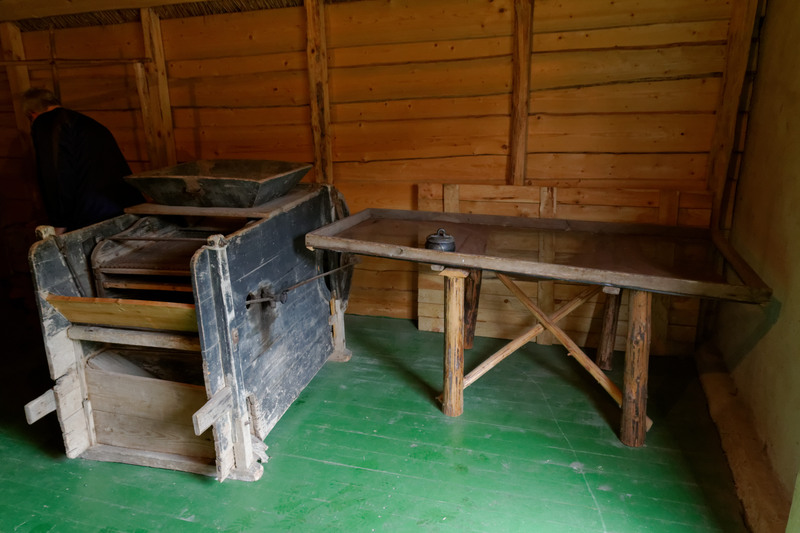Why does Lithuania have such a great beer culture?

Inside Trakai island castle |
I think everyone will agree that for Lithuania to be one of the world's great beer cultures is a bit surprising. For years I've been wondering why this would be, and now I'm finally in a position to propose an answer. And it is really a bit of a puzzler. Right north of the border is Latvia, where they speak a related language, and share the same Soviet heritage, but not the beer culture. Why?
Clearly, the stagnation, isolation, and general backwardness of the Soviet system must have done much to preserve traditional brewing practices. It can't be the whole answer, however. Norway and Finland have preserved traditional brewing, without having ever been communist. Fragments survive in Estonia and Latvia, too, but Lithuania has a far stronger beer culture than all of these countries. Again, why?
Let's start in 1945. At this point, all the Baltic countries have been annexed into the Soviet Union. However, they are not the same, for reasons I explain in my short history of the Baltic countries. Those differences turn out to be important.
Firstly, at this point (1945), Latvia was much more industrialized than Lithuania. Traditional brewing is usually associated with farming, so it's likely that this meant that traditional beer culture was already much weaker than in Lithuania. Further, since Latvia had a Baltic German ruling elite, bigger breweries would predominantly be owned by ethnic Germans and therefore would likely brew in the German tradition.

Red army soldiers statue, Vilnius |
Secondly, the Lithuanian Soviet Republic was run by the Lithuanians themselves to a much greater degree than in Estonia and Latvia. Many Lithuanians have told me that in Latvia the Soviets destroyed traditional brewing culture, but in Lithuania they unofficially accepted it. That fits fairly well with written material I've seen from various places. Atis from Latvia also blamed the Soviets for destroying traditional Latvian brewing.
Thirdly, Lithuania did not see the same influx of Russian immigrants that Latvia and Estonia did, and that will have helped, too. Russians eventually came to make up the majority of the population of Latvia and Estonia, and it's clear that this will have damaged brewing culture dramatically, too. In Lithuania Russians never made up more than 10% of the population.
As you see from what I wrote on traditional Nordic beer, traditional brewing dies by degrees. Traditional ingredients, methods, and ways of thinking disappear one by one, until ultimately people are brewing with international malt, pharmacy hops, and baking yeast, and the tradition is dead.
Different countries have progressed along this scale to different degrees. Lithuania hasn't really taken the first step. Norway and Finland have taken a couple, Sweden, Estonia and Latvia a couple more, and Denmark has gone all the way. From what I'm told, the tradition is not completely dead in Latvia (and in Saaremaa in Estonia the kooduolut still lives), it's just much, much weaker than in Lithuania.
Thus far, I think I've explained how the tradition stayed alive into Soviet times. From reading about the breweries it's clear that in the Soviet period many of the home brewers expanded their operations beyond simple home brewing, and started producing beer for sale. This would be for occasions like weddings, funerals, and for state officials. It's not clear whether this was entirely legal (surely it must have counted as private enterprise), but it seems to have been tacitly accepted, as Lithuanians were saying.

Traditional brewing equipment, Dusetos |
Traditional homebrewing methods do not scale well. They are highly labour-intensive, and the equipment used is not designed for scale. Under the Soviet system, it was impossible to purchase equipment, or to get expertise from abroad, so these home brewers were pretty much left to their own devices. It's clear that they started improvising, making their own equipment and changing brewing methods in order to scale up. In so doing, they basically modernized Lithuanian home brewing culture into a new beer culture different from all others, since it developed in total isolation.
This process began under the Soviets, and then when independence and the market economy arrived in 1991, it exploded. Within a few years Lithuania had over 200 breweries. That's a truly astounding figure. The British were recently delighted to pass 1000 breweries, but to achieve a similar figure for breweries per capita as mid-90s Lithuania they'll have to go well over 3500 breweries.
Of course, as with other early craft brewing booms, most of these breweries have since disappeared, and this is an important development. It means that the breweries with the lowest quality and biggest consistency problems have been weeded out, so what remains is the best and most successful breweries. The Davra, Rinkuškiai, Joalda, Jovaru Alus, Su Puta, and Piniavos breweries at least are among the breweries that were started just after independence, arising directly out of the home brewing tradition.
Suddenly it doesn't seem so strange that Lithuania should have a unique beer culture.

Modernized home brewery, Joniškelios |
Similar posts
A short history of the Baltic countries
We don't know much about the history before the advent of writing in the Baltics in the 12th century
Read | 2013-09-15 16:39
Farmhouse ales of Europe
Having surveyed the state of farmhouse brewing in Norway it's time to look at the same thing in Europe generally
Read | 2014-10-18 16:46
Interview with Simonas Gutautas of Dundulis
During my last trip to Lithuania I met Simonas Gutautas, who works for the Dundulis brewery
Read | 2015-05-11 14:12
Comments
Deima - 2013-10-25 20:08:57
Dear sir, we'd like to republish your story in www.LTUworld.com. Do you mind?
Aaron Evans - 2025-08-29 20:13:16
Why is it that most Latvian beers Iíve tasted are better than the Lithuanian ones?
Lars Marius Garshol - 2025-08-30 15:18:09
@Aaron: Without knowing which beers you've tried there's really no way to answer that.